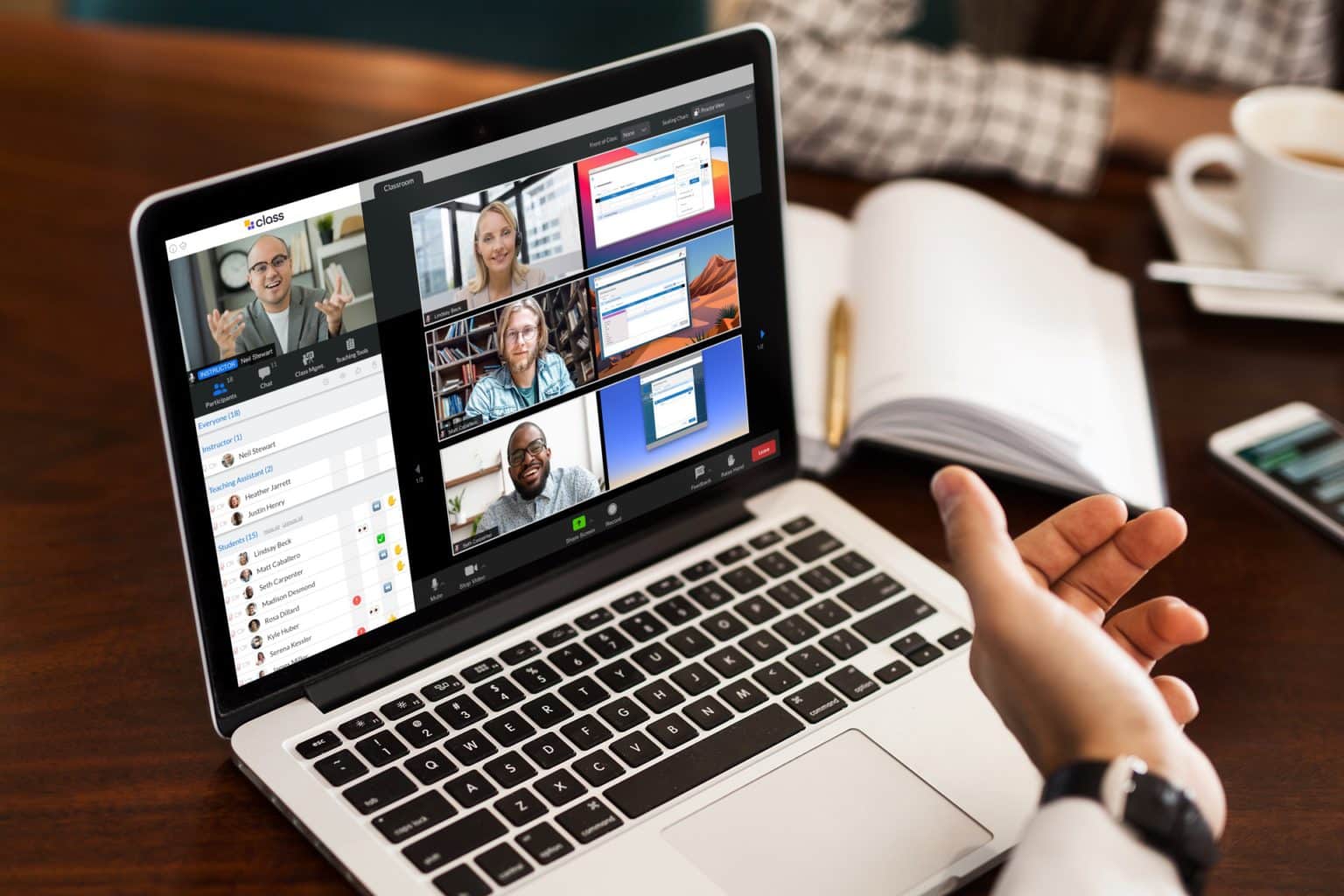

Class is the next generation virtual classroom for K-12, higher education, government agencies, and the workplace. Contact us today to schedule your live demo and see Class in action.

Class is the next generation virtual classroom for K-12, higher education, government agencies, and the workplace. Contact us today to schedule your live demo and see Class in action.

In a work world that continues to be largely remote, corporate leaders, HR professionals, and others are recognizing the importance of human connections, as well as wondering how to make remote employees feel connected. It is something that does not come naturally to most managers, says workplace experience specialist Leni Rivera, especially since there is a stiff learning curve to figure out how to manage remote employees.
Why? Rivera says, “most managers and corporate leaders right now are part of what’s called ‘digital immigrants’—the generation that did not grow up with the internet or the smartphone.” It is a group, she says, that instinctively feels that developing and strengthening connections can best be done in person.
Digital natives, on the other hand, are comfortable with the online environment and we can learn a lot from them, Rivera says. “If you ask anyone from the digital generation whether it’s possible to stay connected, manage teams, and lead projects virtually, they may not even understand the question because the answer is so obvious,” she says.
Of course, it’s possible for technology to allow people to stay connected. “The real change is not in the tool for connectivity, it’s in the method,” Rivera says. It’s a critical issue that organizational leaders and managers should be addressing proactively.
Trust and human connection cannot exist in an atmosphere of anomie, says Susan Smith Kuczmarski, Ed.D., an expert on values-based leadership and the author of Lifting People Up: The Power of Recognition. Anomie, she says, “means alienation or normlessness.” It is the result of being in a situation that lacks a belief system—values—and behavior guidelines, or norms, she says. “Anomie leaves individuals feeling distant, disillusioned and disjointed. It leaves organizations dysfunctional, distracted and disrupted.”
In the workplace, Kuczmarski says, anomie “weakens the ties and social bonds that usually hold workers together and keep them going.” Isolation runs parallel with anomie, she says. “Without norms, people believe that they live and work on an island—totally disconnected psychologically and emotionally from the group, despite being a part of one virtually.”
Therefore, one of the most important ways to make remote employees feel connected is to create a shared sense of values and norms. Leaders must be mindful of this and take steps to develop, communicate, and model behaviors based on shared values and norms. Without these agreed upon values and norms, Kuczmarski says, “behavior and communication becomes random, inconsistent, and arbitrary.” In this environment, she says, employees never know from one day to the next how they will be treated by managers and vice-versa. When signals are mixed, communications are misinterpreted and behavior becomes erratic, she says. The end result: people tend to become more and more isolated from each other.
Interestingly, according to research by the HOW Institute for Society, published in March 2021, while employees report that they’re feeling a stronger connection to their organizations and supervisors during the pandemic, they’re feeling a weaker connection with coworkers. As one respondent said: “I feel less connected to my coworkers because I work at home, alone. I never get to enjoy the camaraderie of being around team members. You just sit alone in your house and work.”
That is a situation that organizational leaders can—and must—address.
“Studies show the number one need humans have in relationships and connections is psychological safety—being seen and knowing that we belong,” says Shirani M. Pathak, a licensed psychotherapist, leadership development consultant, author, speaker, and podcaster. “In a world where remote work is becoming a norm, it can feel harder to cultivate psychological safety in relationships because we think we can only connect in this way when we’re face to face in person,” Pathak says. But, she adds, that’s not the case.
“Safety and connection can be fostered in both remote work and on-site work by creating an environment in which employees have the ability to show up as their authentic selves and to know it’s okay to get things wrong, to ask questions, and to make mistakes,” says Pathak. Leaders should model these behaviors themselves, she says. “It’s about taking ownership, accountability, and not pretending we know everything.” Leaders need to show up as human, she says. “When leaders can show up in this way, a sense of connection is naturally created from the safety that gets created in the space, regardless of it’s the space on a computer screen or in real life.”
That approach can go a long way toward creating a climate and culture that addresses human needs—not only now, during the pandemic, but always. Leaders should also take steps to ensure that they are mindful about creating opportunities for human connections.
Tim Brackney, president and COO of global consulting firm, RGP, which works with Fortune 1000 companies, says that human connections have always been a key aspect of a leader’s job. Now, though, these connections—or the lack thereof—are more important than ever. “Most of the social contact people have in a virtual environment are scheduled or intentional moments—these often lack personal engagement and can feel exhausting.” Brackney stresses the importance of scheduling time for “unintentional moments to connect.” That may even include in-person opportunities to connect. Brackney suggests that companies may “find new ways of using physical spaces, even if it isn’t in the reimagined office space.”
Scott Winstead, the founder of MyElearningWorld.com and a tech expert specializing in e-learning and remote software, agrees. “A lack of connection can hinder productivity in your remote workforce,” he says. “When employees work from home they lack the casual conversations and interactions they’d normally have in the office.” While that may seem unimportant, he says, finding fun ways to stay connected when working remotely is crucial for helping employees feel like valued members of the team and to boost engagement, Winstead says.
Apps like Slack can help create these connections, Winstead says, but they shouldn’t be used only for making work-related connections. “It’s important, as you would in the office, to create space for fun,” he says. “You can create channels for things like #family, #sports, #pets, #random, etc., where team members can interact about more personal and fun things.”
Virtual non-work-related events can also help, Winstead says. “Just as you would organize an office happy hour, why not a virtual one via Zoom?”
But, while technology can help, it alone does not answer how to make remote employees feel connected. In a post-pandemic world, the leader’s role in ensuring connections and engagement is more important than ever and will require different competencies.

The competencies required by leaders today, says Brackney, have changed. Emotional intelligence, he says, is more crucial than ever. “While business leaders without this skill could get by prior to the pandemic by relying solely on delivered results, it’s no longer possible in today’s environment,” Brackney says. “Effective leaders must have an innate sensibility to pick up on cues from people, a desire to do it and the ability to pivot when necessary.”
Methods of communication, to ensure positive and productive human connections, will also need to change.
“If we continue to rely on the ways we used to communicate and lead prior to the pandemic, such as relying on in-person interaction and returning to the office full-time to force physical encounters, then we are not allowing ourselves – nor our organizations – to move forward.” Instead Rivera suggests, “focusing instead on measuring results rather than time-spent-working, and leading with a new culture of trust and accountability, are ways that companies and leaders can begin with this movement.”
Technology can be a great enabler of many things. But when it comes to human connections, it’s the “human” in the equation that matters most when figuring out how to make remote employees feel connected.

Class is the next generation virtual classroom for K-12, higher education, government agencies, and the workplace. Contact us today to schedule your live demo and see Class in action.

Class is the next generation virtual classroom for K-12, higher education, government agencies, and the workplace. Contact us today to schedule your live demo and see Class in action.
Get our insights, tips, and best practices delivered to your inbox

Sign up for a product demo today to learn how Class’s virtual classroom powers digital transformation at your organization.

Features
Products
Integrations